
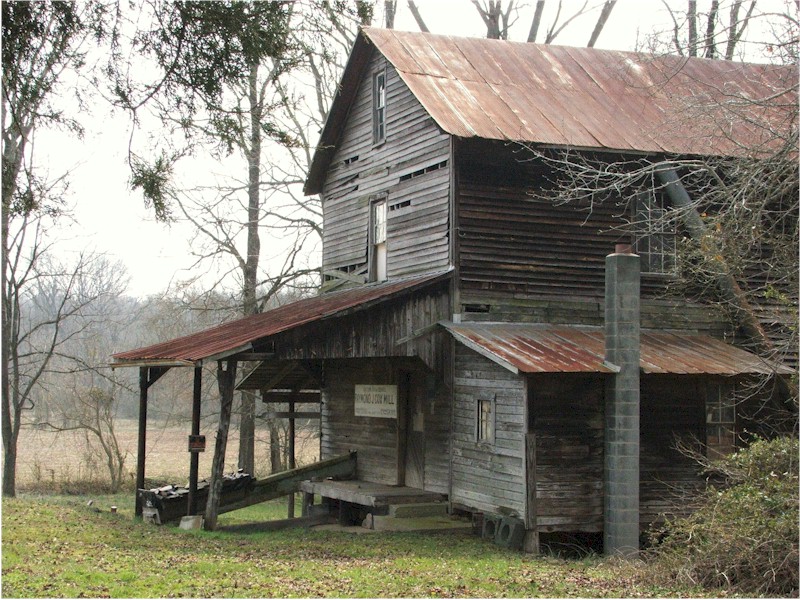
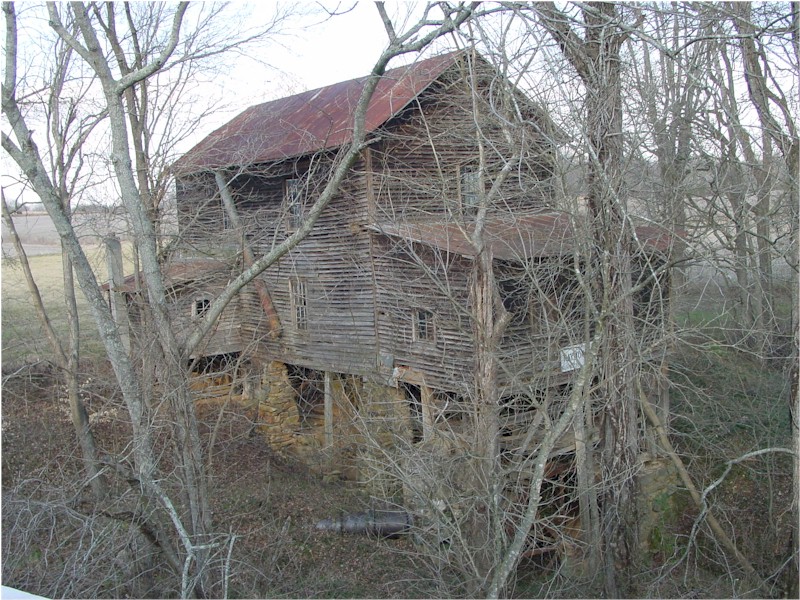
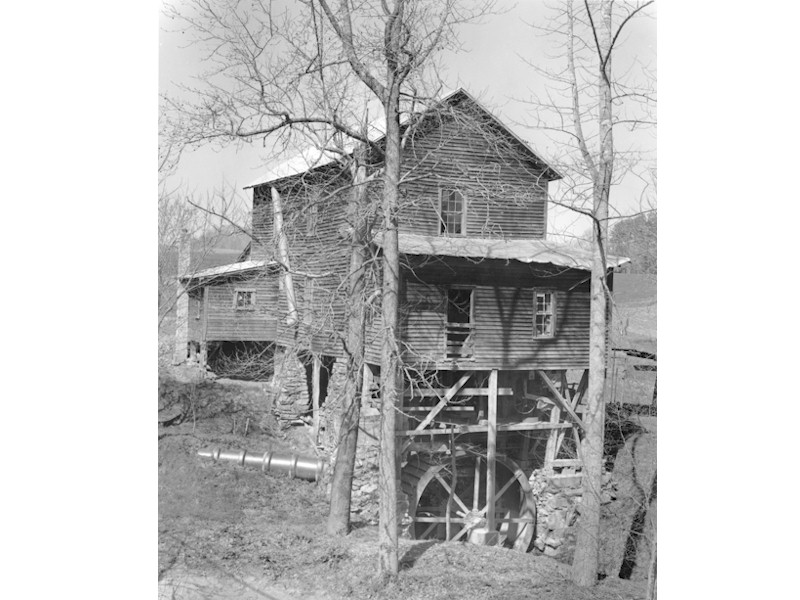
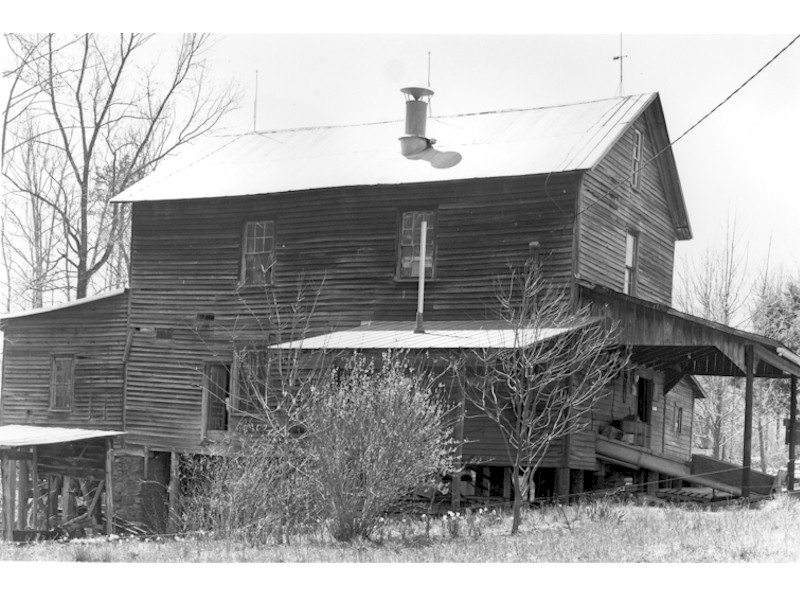
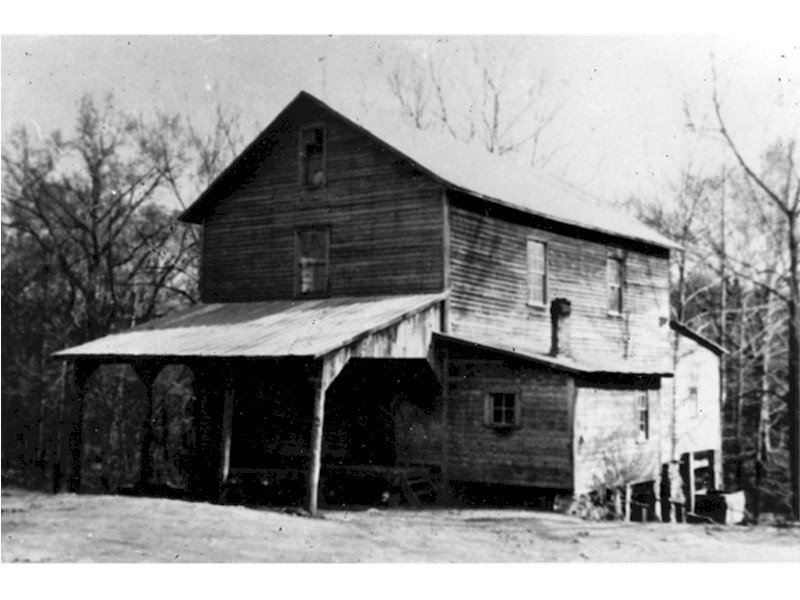
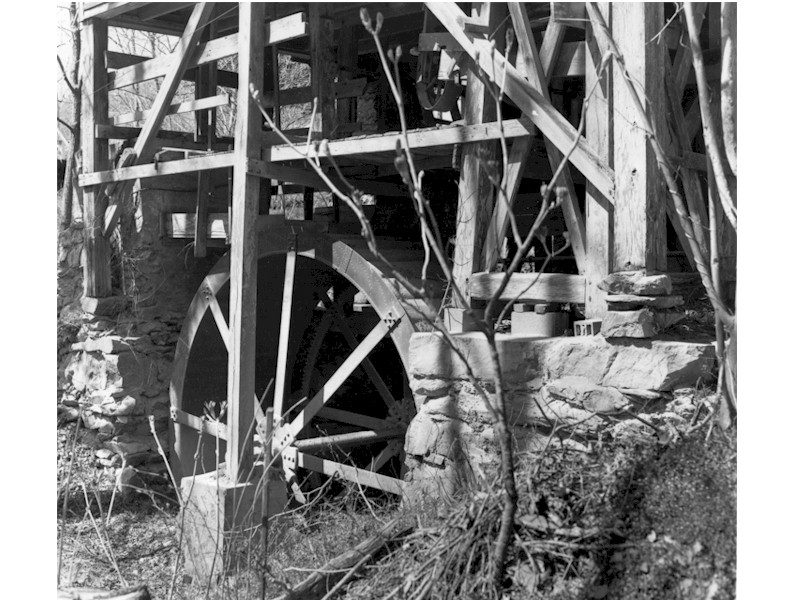
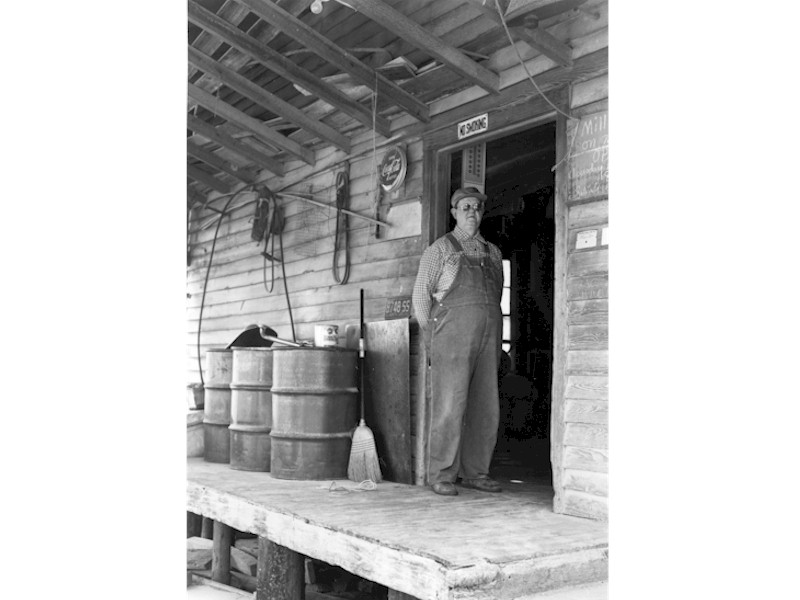
Read the Cultural Heritage Site Designation Report:
The Raymond Cox Mill is the last grist mill standing in Randolph County. In 1985, Mac Whatley wrote in his Architectural History of Randolph County of the Raymond Cox Mill:
"One of the last operating grist mills in the state, Raymond Cox's mill still custom-grinds and mixes animal feed. Still in place, although full of silt and unused since September 1945, is an overshot Fitz water wheel made in Hanover, Pennsylvania. The dam used until that time was an oak plank dam, now destroyed. A covered bridge over the river was demolished in June 1953. The present mill was built in the early 20th century by Allison Beane, and is also known as Beane's Mill. The site of an earlier mill can be seen nearby."
Raymond and his wife Flossie Cox ran the mill from the 1930s until Raymond's death in 1986. He was still using water power until 1945, when flood water overran the working parts, rising 47 inches into the ground level area. He continued to grind meal and animal feed using a diesel engine.
In addition to the Raymond Cox mill, the Mill Creek site is a historic area on its own. According to Whatley, the site of the mid-18th century mill known as William Cox's Mill is about 100 yards downstream from this mill. William Cox received a land grant in November 1757 on the head of "Cox Mill Creek" waters of Deep River on both sides of Crawford Road, implying that William Cox's mill was already in existence in 1757. Old deeds often refer to Mill Creek as "Coxes Mill Creek."
In William Cox's will (Orange County Will Book A, page 53, dated January 1767), he left his son Thomas Cox "the remaining part of the aforesaid tract of land I now live on... including Mills and improvements."
The 1765 minutes of Cane Creek Friends Meeting mention a preparatory meeting "on Mill Creek in Cox's settlement...." Friends in the area had formally requested that they be permitted to hold meetings on Mill Creek in 1758 and probably held some early meetings at the home of William Cox. As the Mill Creek movement faded, Friends were granted permission to hold a preparative meeting at nearby Holly Spring in 1790.
The William Cox Mill is one the the few in the Piedmont shown on the Collet Map of 1770.
RELATED SITES:
The Harmon Cox Mill
Buffalo Ford